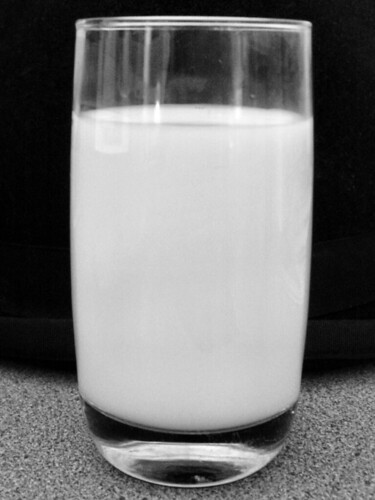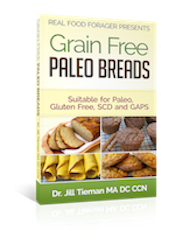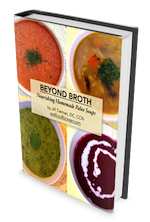
The Journal of Agricultural and Food Chemistry recently reported that researchers at the universities of Jaen and Cordoba in Spain and the Abdelmalek Essaadi University in Morocco have identified a multitude of drugs and chemicals in cow, goat and human breast milk. All of the samples contained traces of 20 different antibiotics, antiseptics, anti-inflammatories, beta-blockers, painkillers, growth hormones and other hormones.
These scientists invented a new method of evaluating food and drink that is more efficient in detecting these chemicals in food. The researchers say that their 30 minute test is the most sensitive test available.
While they researched milk in Spain and Morocco, it may be extrapolated that the milk of Britain, Europe and the United States is also contaminated.
Many of the drugs listed are routinely given to conventionally raised animals. They are put directly into the feed. The feed is certainly not organic so it would have pesticide residues. It makes sense that residues would also be present in a body fluid such as milk.
As discussed in previous articles, commercial animals are routinely given antibiotics to prevent illness (as they live in crowded and inhumane conditions) as well as to spur growth. Not only is this adding an unwanted element to the milk, it is also contributing to antibiotic resistant bacteria that can be fatal.
Last year Portsmouth University scientists found that fish and shellfish were being contaminated with the anti-depressant Prozac. The drug enters the waterways from the sewer system. The chemicals are broken down in the treatment facility, but apparently not completely.
The scientists observing shrimp, saw that they were drawn out into the open instead of hiding under rocks or seaweed. This makes them more vulnerable to predators and may seriously change the dynamic of the ecosystem.
Prozac alters the levels of serotonin in humans and may do the same in animals and fish. While it may help some people, it attracts the shellfish to light and this makes them at risk. Other fish may be at risk as well.
Marine zoologist, Dr. Ford of Portsmouth University said,
There is a huge range of anti-depressants on the market and maybe at very low concentrations they don’t have an effect. But once they are in one big soup they may add up to have an effect … Drugs are partially broken down in the treatment process but what we are realizing now is that a lot more gets through than we thought.
The treatment plants weren’t designed to break down medicines so some inevitably get concentrated … and they get released into streams or onto beaches.
Effluent is concentrated in river estuaries and coastal areas, which is where shrimps and other marine life live – this means that shrimps are taking on the excreted drugs of whole towns.
Other studies have shown that caffeine is released into the waterways even after sewage treatment. The hormones from the contraceptive pill and HRT have been blamed for feminising fish, leading to male fish producing eggs. The effects of antibiotics, blood pressure drugs and cholesterol-lowering drugs on wildlife are also being studied around the world.
Clearly, we are living in a toxic environment. While we cannot control everything that our food sources are exposed to, we can make choices as to what food sources we use. Choosing animals that are raised “beyond organic” on biodynamic farms is a way to insure that the animals are not given any chemicals that may show up in their meat or milk.
Another reason to consider switching to wholesome, nutritious, fresh raw milk.
Photo Credit: Striatic
This post is linked to: Healthy 2DAy Wednesday, Real Food Wednesday, Foodie Wednesday, Full Plate Thursday, Creative Juice Thursday. Simple Lives Thursday, Pennywise Platter, Fresh Bites Friday, Food Trip Friday, Fight Back Friday, Friday Food, Melt in your Mouth Monday, Sugar-Free Sunday, Monday Mania, Mangia Monday, Meatless Monday, Homemaker Monday, Mouthwatering Monday, Weekend Blog Carnival, Tuesday at the Table, Tempt my Tummy Tuesday,Traditional Tuesday, Tuesday Tasty Tidbits
The owner of this website is a participant in the Amazon Services LLC Associates Program, an affiliate advertising program designed to provide a means for sites to earn advertising fees by advertising and linking to Amazon properties including, but not limited to, amazon.com, endless.com, myhabit.com, smallparts.com, or amazonwireless.com. Disclaimer
Tropical Traditions Gold Label Virgin Coconut Oil

Tropical Traditions Gold Label Coconut Oil is a product I use every day.











{ 7 comments… read them below or add one }
When I was growing up my mom would by only fresh milk. When I moved to Canada and lived in a big city I never really thought about it , but now that I have kids and moved to the country I need to find out where I can buy some fresh milk……thanks for the reminder and thanks for linking this to Foodie Wednesday.
Great article as usual!
HI Bibi,
Thanks for your kind words! The Weston a Price Foundation would have info on where to find fresh milk, or Realmilk.com.
Jill, Thank you so much for sharing with Full Plate Thursday and hope to see you again real soon. Hope you are having a great week!
Miz Helen
I only drink organic whole milk, in an effort to stay away from all the chemicals. Is this included in the “bad milk” category, too?
Visiting from Blessed With Grace
Hi Heather,
Of course organic whole milk is better, but pasteurization does kill most of the good bacteria and other “live” elements in fresh raw milk. Raw milk from pastured cows is “beyond organic.”
See RealMilk.com for more info on raw milk
Wow, I have been reading a lot about this phenomena lately and it’s really sad. It’s sad that we have to be so careful to protect ourselves from the food we are offered. I’ve really been thinking of cutting dairy out of my diet all together.
-Giselle
Hi Giselle,
Yes it is sad. One solution is to switch to fresh raw milk from a grass fed cow as I mentioned in the post.